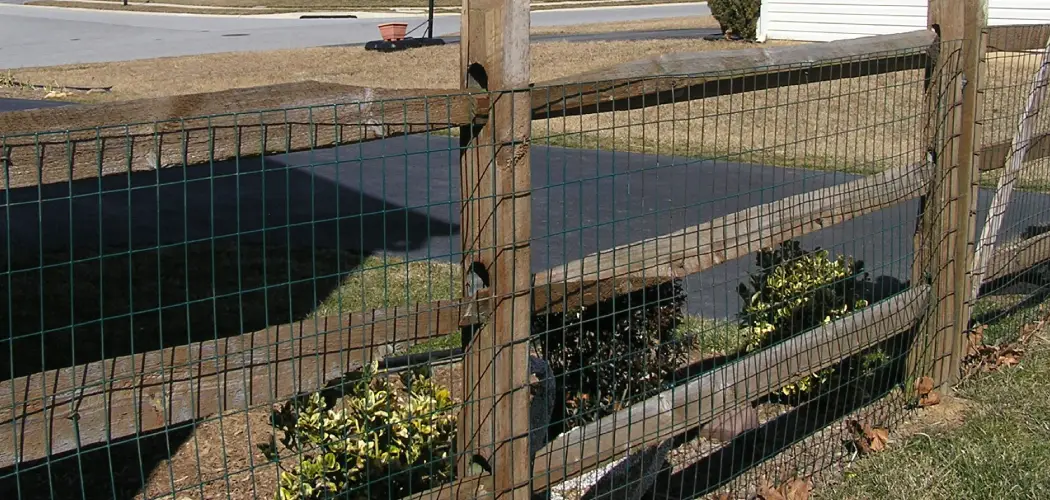A welded wire fence with wooden posts offers a cost-efficient and durable fencing solution. It has several advantages over other fencing materials like chain links or vinyl. For example, it is much more aesthetically pleasing than its counterparts, making it the perfect choice for any homeowner looking to add visual appeal to their property.
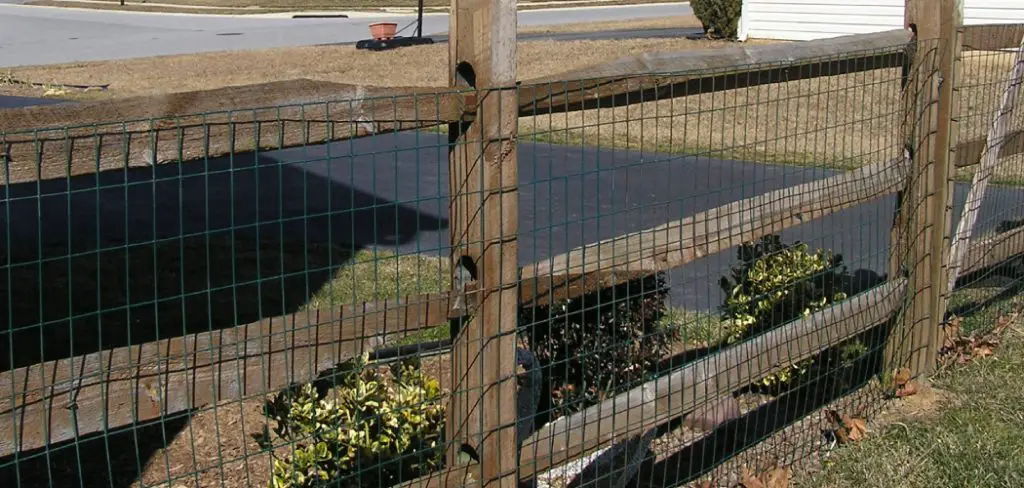
There are several advantages to building a welded wire fence with wooden posts. This type of fence is strong and durable and provides good security while still being relatively inexpensive compared to other fencing options.
The welded wire makes it easier to install than other materials since the panels are already pre-made, reducing installation time significantly. You can find step-by-step instructions on how to build a welded wire fence with wooden posts in this blog article.
Tools You Will Need
- Wire cutters
- Pliers
- Wire tools
- Hammer
- Level
- Drill and bits
- Miter saw or circular saw, with a sharp blade for cutting wood
- Measuring tape
- Steel posts or wooden posts (depending on the type of fence)
- Welded wire mesh
Step-by-step Instructions for How to Build a Welded Wire Fence With Wooden Posts
Step 1: Inspect the Land
Before beginning the fence installation process, spend time walking around the area and assess what kind of ground surface is present. Make sure that there are no large rocks or other obstacles that could make it difficult to install your fence.
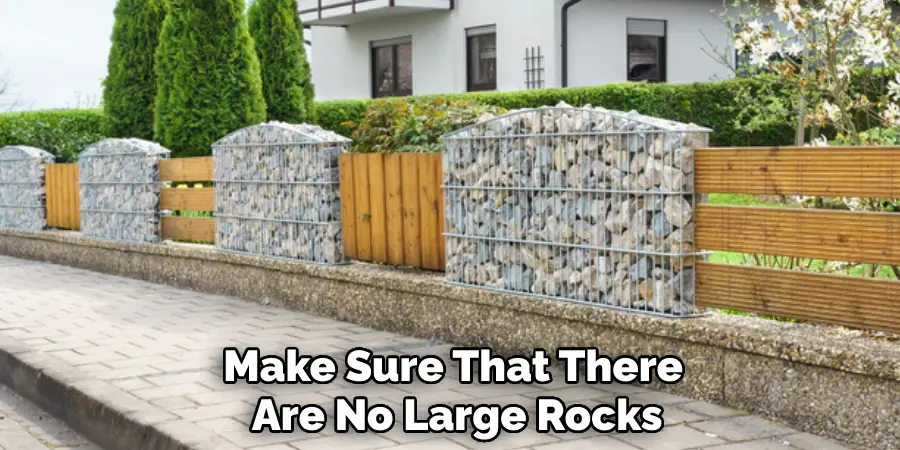
Step 2: Mark & Measure Fence Lines
Identify where you’d like your fence lines to be placed, and then measure out the length of each section. Make sure that you have a clear idea of how long each line will be before you start building. Once your fence lines are measured and marked, begin setting the wooden posts. Drive them into the ground, making sure that they’re firmly in place.
Step 3: Attach the Welded Wire to the Posts
Attach a heavy gauge wire to each post about 12 inches off the ground and as close to the posts as possible. Make sure that you have enough overlap so that all sections of your fence are secured. Using a heavy gauge wire, tie it securely around each post and onto the welded wire. Ensure all ties are evenly spaced and tight so your fence remains secure.
Step 4: Secure Fence Ends
To make sure that your fence is properly secured at either end, use heavy-duty screws and secure them onto the posts. Depending on where you need access to your property, install gates accordingly at these points. Make sure that they’re properly secured and able to open and close easily.
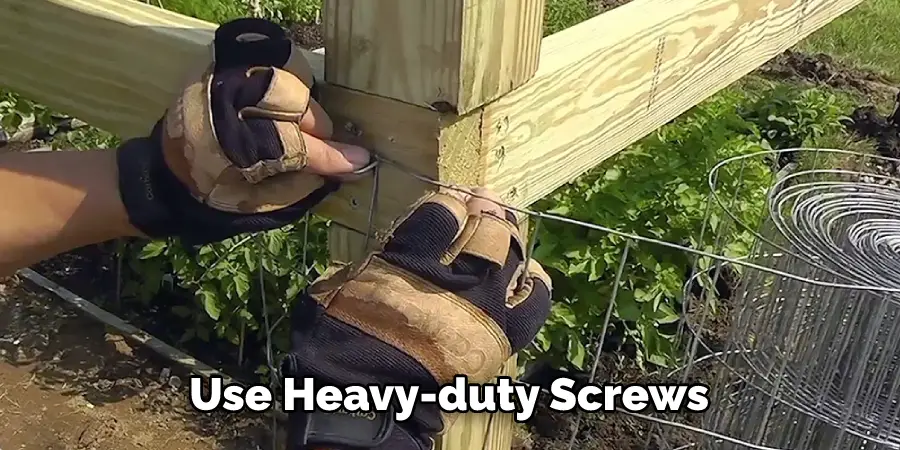
Step 5: Put Fence Posts in Concrete
To make sure that the fence won’t move or shift, set up your posts in concrete. Make sure to use two bags of concrete for each post so that it is firmly secured. Once the fence is securely installed and the posts are set in place, attach fence caps on top of each post. This will give your fence a finished look. Once everything is in place and you’re sure that the fence is secure, sit back and enjoy your new addition to the property.
Safety Precautions for How to Build a Welded Wire Fence With Wooden Posts
- Wear personal protective equipment, including eye protection, gloves, and a dust mask or respirator when cutting wood and welding metal.
- Check for overhead power lines before beginning work on the fence. If overhead powerlines are present, contact utility companies to learn about safety protocols for working in that area.
- Select treated lumber for posts that will touch the ground. Treated lumber is more resistant to rot and insects than untreated wood.
- Install fence posts in a straight line, keeping them evenly spaced apart at correct intervals according to the manufacturer’s instructions.
- Make sure all fence post holes are deep enough so the posts are securely set in place.
- Place welded wire fence fabric carefully on the posts and attach it to the posts with galvanized U-nails or hog rings.
- Inspect your work regularly, particularly if animals are present, to ensure that all parts of the fence remain secure and free from damage. Replace any damaged parts immediately to prevent animals from escaping or entering. Check for loose posts, gate hinges, and any sagging sections of wire fence fabric.
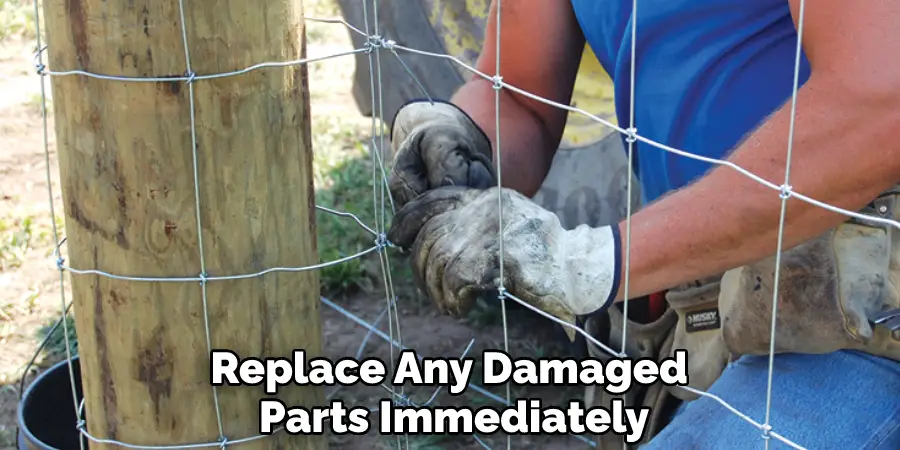
By following the above steps carefully, you can ensure your welded wire fence is safe and secure.
How Much Space is Required Between Each Post When Constructing a Welded Wire Fence With Wooden Posts?
When constructing a welded wire fence with wooden posts, it is important to ensure that each post has ample space between it and the neighboring post. Generally, spacing for such fences should be no greater than 8 feet apart, although 6 feet apart is usually the recommended distance to provide adequate stability and support.
Additionally, when laying out your posts, be sure to leave enough room for the welded wire mesh fence panels to fit between them. This will allow you to create a strong and durable fence that securely contains animals or serves as a decorative element in landscaping.
Finally, it is important to remember that spacing between posts should also factor in any additional hardware, such as gates and latches. This will ensure that the fence is strong enough to bear these items’ additional weight and strain.
Proper planning and spacing allow you to create a welded wire fence with wooden posts that will last for years. To summarize, when constructing a welded wire fence with wooden posts, it is important to space each post no more than 8 feet apart, leaving enough room for the welded wire mesh fence panels.
How Long Should It Take to Construct a Welded Wire Fence With Wooden Posts?
The amount of time it takes to build a welded wire fence with wooden posts will vary depending on the scope and size of your project. In general, constructing a welded wire fence with wooden posts can take anywhere from one day for a small job up to two weeks for a larger and more complex job.
The process of building a welded wire fence with wooden posts consists of several steps. Before you begin construction, it is important to plan out the layout and measurements of your fence. Once you have determined the size and position of your fence, you can start gathering the necessary materials, such as wood, welded wire mesh, stakes or posts for support, nails or screws, and other hardware as needed.
Are There Any Special Considerations That Need to Be Taken When Constructing a Welded Wire Fence With Wooden Posts?
When constructing a welded wire fence with wooden posts, there are several things to keep in mind. First, ensure the posts are placed securely in the ground and that they are of sufficient height for your needs. Furthermore, make sure you use galvanized or vinyl-coated wire mesh to prevent rusting over time. Additionally, it’s important to use the right type of hardware, such as nails, screws, and brackets, to connect the mesh securely to the posts.
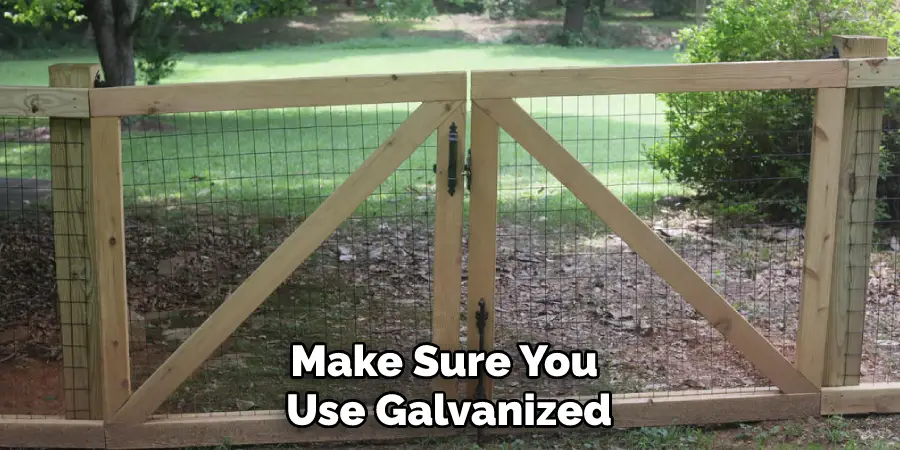
Finally, make sure you check local building codes before starting your project in order to ensure it complies with all regulations. Following these tips will help you construct a safe and secure welded wire fence with wooden posts. Using wooden posts for your welded wire fence has some additional benefits. For one, they look great and can add a rustic charm to any property. Additionally, the wood is easy to work with and won’t corrode over time like steel posts would.
What Are the Benefits of Constructing a Welded Wire Fence With Wooden Posts Versus Other Materials?
Welded wire fencing with wooden posts has many advantages over other types of fence construction. Wooden posts provide a strong and sturdy frame that can withstand the weight and tension caused by the fence’s wires, keeping them securely in place. The wooden posts also add a more aesthetically pleasing look to the fence compared to metal or plastic posts.
Additionally, compared to other materials, wooden posts require less maintenance than metal or plastic, reducing long-term costs. The ease of installation is another major benefit when constructing a welded wire fence with wooden posts.
With the right tools and instructions, most people can install their own fencing without having to hire a professional. Finally, using treated lumber offers additional protection from the elements and ensures that your fence will last for years to come. Overall, using wooden posts in a welded wire fence offers many benefits. Not only is it more aesthetically pleasing, but it is also easier to install and maintain compared to other materials.
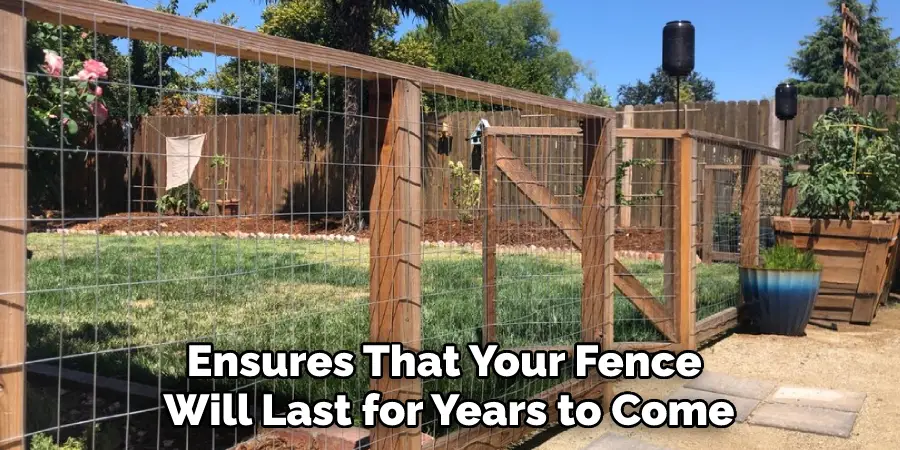
Do You Need to Hire Any Professional?
Installing a welded wire fence with wooden posts is a project that an experienced DIYer can complete in one day. However, if you are uncomfortable with the task or lack the necessary tools, it is best to hire a professional.
Professional installers will have access to special equipment such as posthole diggers and power augers. They will also be able to correctly handle the electric fence energizer required for the installation and better understand how to properly space and secure the posts.
In addition, professional installers are knowledgeable about local building codes and regulations that may need to be adhered to when making fence installations. If you hire a professional for your welded wire fence installation, ensure you receive references and check that the contractor is properly licensed and insured.
How Much Will It Cost If You Hire Any Professional?
If you decide to hire a professional for your welded wire fence with wooden posts, the cost will depend on several factors, such as the size and complexity of the project. Generally speaking, it can cost anywhere between $20-$50 per linear foot depending on what type of materials you choose, how much labor is required, and any other additional costs.
Keep in mind that the cost may be higher if you need to hire a professional for complex tasks such as attaching the wire to the posts or setting them into concrete footings. If you are looking for an affordable way to get your fence up and running, hiring a professional is often worth it since they will have all of the necessary tools and experience to get the job done quickly and correctly. Remember, installation costs can add up, so factor them into your budget.
Conclusion
One of the main disadvantages of building a welded wire fence with wooden posts is that it will require more maintenance than other types of fencing. Wooden posts are susceptible to rot, warping, and insect damage over time, so regular inspection and treatment may be needed to keep your fence in good condition.
In conclusion, building a welded wire fence with wooden posts is not as difficult or time-consuming as it may seem. It requires the right materials, tools, and knowledge to get the job done correctly. Once you have all of these items, the process can be completed in just a few hours. This type of fence provides superior strength and durability, making it an ideal choice for many homeowners.
I hope this article has been beneficial for learning how to build a welded wire fence with wooden posts. Make Sure the precautionary measures are followed chronologically.

